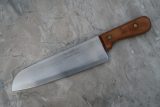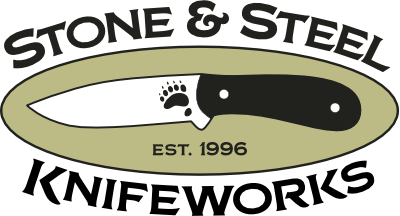The following are my personal feelings about how to introduce knife use to children.
There are many schools of thought about this issue and everyone has their own personal feelings on the subject, as well.
My suggestions are based on my experiences with my son and other children in my life. I share my thoughts here so that you might start thinking about how you might want to go about introducing knife use to a young person in your life.
First I would suggest you think about how you feel about knives. Are they a tool to you or something to be feared? This is an opportunity to connect with your child and you both could learn a lot here; but any fear will make it a bit more challenging.
Accept that your child will cut themselves. But that is ok. They won’t die or suffer any lasting damage. They will learn. And you will be there to help them when it happens. Maybe bone up on your basic first aid skills, just in case.
Next, think about your child.
Do you think they are ready for a knife? Do they listen well and focus well? Do they seem generally responsible? Have they ever used a knife before? Have you used a knife in front of them? Have you talked about knives and how to use one with them.
There is no set “best age for a knife”; it really depends on the person (child) and who they are, how they are maturing, etc. I would say, just due to basic motor control, the age of three or four is probably a good starting point. However, I know children who started using a knife, with careful instruction and supervision, at a younger age.
The first step is to begin talking about knives with your child. Start talking about how to act with and use a knife safely. Use a knife around them (invite them to watch and spend time with you when you are using a knife) and point out how you use it, what you are thinking about, what steps you are doing to be safe and careful, etc.
Consider starting your child’s knife use in the kitchen; using a knife there for the functional work many of us do daily. This environment already has boundaries, usually has a focused atmosphere and easily allows you to spend time with your child guiding them. It also demonstrates the practical tool aspect of knife use. And it allows them to feel like they are contributing to the household, something they may enjoy.
If you choose to start in the kitchen, I would suggest getting a sturdy stool or small step ladder so your child can safely reach the counter top and work next to you. I would not offer them a dull knife per se, but if the knife is very sharp, and you are uncomfortable, you might consider lightly dulling it by running the edge once over the unglazed part of the bottom of a ceramic cup.
A good kitchen knife to start with is a small utility or large paring knife, with a 4-5” blade, non-serrated.
 I have also customized an inexpensive chef knife, shortening the handle, and rounding off the tip to a more Japanese Gyuto shape.
I have also customized an inexpensive chef knife, shortening the handle, and rounding off the tip to a more Japanese Gyuto shape.
Try starting by cutting softer foods like bananas and cucumbers and working up to foods requiring more cutting pressure like carrots.
Another space to start your child’s knife experience is when camping. Again, this situation often has boundaries already built in and lends itself to a focused setting. If camping is not an option, just sitting outside together around a fire ring or on the patio works as well. The first thing many of us learn to whittle on is the first marshmallow roasting stick we make ourselves.
If you are starting with an outdoor knife, a small fixed blade with a 3 or 4” blade length is a good choice. Consider the Morakniv line, especially those with guards. A folder with a locking blade 3” or less is a safe option as well. I am particularly fond of the Opinel line. They are inexpensive (less pain when lost), have a simple but solid lock and with a wooden handle and carbon steel blade the child gets direct feedback on caring for the knife. If you are very comfortable with it, a slip joint folder, like a Case or Schrade can be considered.
Start by explaining the parts of a knife. Where the edge is, the spine, the handle, etc. If it has a guard or lock, point these out and explain their function. If it is a folding knife, show how to open and close it safely. If it has a sheath, how to remove it from the sheath and replace it.
Move on to how to hold a knife firmly, how to cut with it safely (cut away from “cut-ables”, like arms, legs and other people; watch the follow through, etc.).
Demonstrate how to cut with the knife, and then have them cut while you watch. Urge them to go slow.
There is no rush. Follow your child’s lead and adjust to how quickly they learn and master the skills you share. They may take to it quickly, or more slowly. That is ok. Make sure they are safe and use a pace that seems best for your child.
Remember, though, even children who know how to use a knife properly, do not yet have the cognitive ability to have that knife with them at all times, unsupervised, and not do something inappropriate at some point. They will use it to cut something that should not be cut. Knives are tools that should be used under supervision by an experienced guide.
